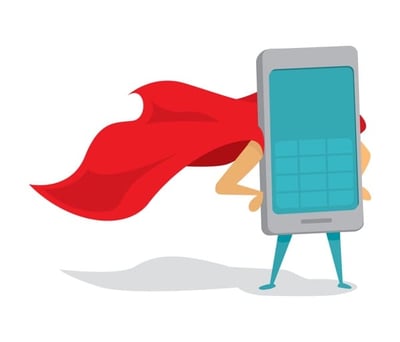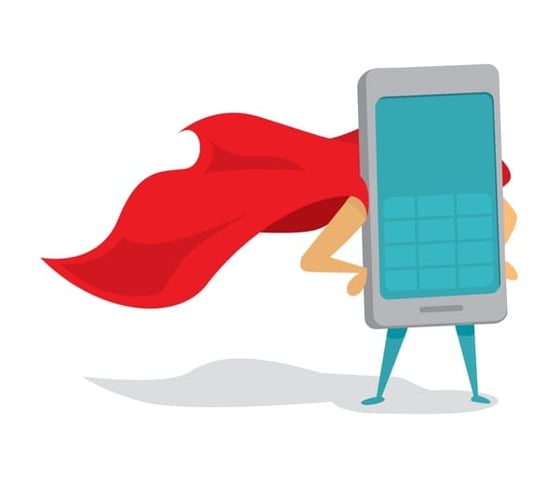While the first mobile phones provided consumers with one basic function, to make telephone calls wirelessly, today’s mobile devices do much more than simply allow you to talk with someone else. They have become our web browser video cameras, social media device, navigation guide, gaming platform, appointment calendar, alarm clock, flashlight, etc… Depending on which apps you’ve downloaded, there’s a good chance your mobile device does much more but suffice to say the days of “just making phone calls” are a thing of the past.

As businesses seek to capture the attention (and spending dollars) of the mobile consumer, having a solid mobile strategy in place is critical to remaining relevant in today’s mobile-first society. In fact, Gary Vaynerchuck, founder of Vayner Media author of several NY Times best-selling books about the “digital economy” said in a 2015 keynote presentation “I would rather have someone roll up on me, stab me in the stomach and steal my wallet than lose my phone.” That’s a pretty serious claim, but to many, the mobile device is just that important. As you develop your strategy, the following are key areas that you may want to include. While not an “all-inclusive” list, these are some of the main areas to get you thinking.
Google’s Paying Attention, So You Should Too
You may have heard this already, but it bears repeating given the topic at hand. According to Google (the world’s largest search engine), 2015 marked the first time in the history of the Internet when more searches were done on a mobile device than on a desktop. That means there’s a good chance when someone is looking for what you do, they are starting the searching process on their mobile device.
Assuming they find you, the first thing you need to include with your mobile strategy is what the “mobile experience” is like when visiting your website on these smaller devices (with small screens and touch-to-navigate interface. Is your site mobile-responsive and providing its visitors with a pleasant, easy-to-use browsing experience? Or, does the visitor need to partake in “finger yoga” with pinch, zoom, tilt, etc. to get the information they are looking for? If your answer is the latter, that needs to be fixed – quickly!
To save its users the disappointment of visiting websites that are not mobile-friendly, Since last May Google has been labeling mobile-friendly websites directly in search results. This way when you search on a mobile, you know which sites are (and are not) going to be easy to use while you’re on a smaller screen. They even have a free tool you can use to test your site (and maybe you’ll want to check out the competition as well), which can be found here. It’s recommended if you’ve not checked your site yet, it’s a good idea to see your site “as Google sees it” and first determine if you have some work to do! Any other efforts on your part to engage the mobile customer will be wasted if they come back to your site and have a bad experience.
Don’t Forget, It’s a Communication Device
Mobile devices started as a way to talk with one another and have a conversation any time, from anywhere. That capability still exists today, but the type of “communication” has certainly evolved over the years. Thanks to interactive screens, downloadable apps, Internet connectivity, and high-resolution cameras we now have so many different ways to share information. This new form of communication can continue to be one-to-one, as it was in the beginning. But, thanks to social media sites like Facebook, Instagram, Twitter, and others… the communication process can go well beyond the limitations of a one-on-one conversation. Your posts, tweets, and photos can span the globe, reaching potential customers in an instant.
Yeah, that’s pretty cool… but the word “communication” is used here for a reason. If all you’re going to do is use your mobile device to post, you’re missing out on an important part of the relationship-building process. To be truly a communicative device, you need to have a two-way exchange of dialogue. So when you post that great pic on Instagram of your latest product and you start to get comments, be sure to respond back. If you are using Twitter, it’s easy to reply back, retweet, or even send a direct message to let folks know you’re listening and happy to chat further. This has always been the case, but the mobile device (because it’s always with us and always connected) now makes it possible to keep that dialogue going. Not only is this a good practice, but it’s becoming the expectation… which means if you’re not doing it, there’s a problem.
Geo-Location Knows Where You Are
One of the most recent technology trends that brings attention to the power of the mobile device as a location tool has been the explosive growth and popularity of Pokémon Go. This free app uses augmented reality to place your “Trainer” on a map that interacts with virtual creatures. For any avid Pokémon Go users reading this, I admit that’s a very simplified explanation of the game. Eventually, businesses will be able to sponsor “Pokestops” to lure users of the app to their place of business, and some who have been fortunate to have one of these stops close by their business have already started to leverage the fact that people are now getting “out and about” and taking an opportunity to share information about their business in the process.
Prior to the Pokémon phenomena hitting our devices, sites like Foursquare (launched in 2009) have been letting consumers identify their location and “check-in” at local businesses, share photos and offer reviews. Over the years the service has gone through several changes to try and keep current with consumer preferences, but their focus has remained on leveraging the “in-person” experience to help others gain familiarity about a business through ratings, feedback, and even the occasional incentive.
In both of these examples, the power of GPS, combined with your camera, Internet access, and on-screen interactivity makes the game possible (and quite addictive), combine to put a significant amount of power in the hands of the user. If you offer a great experience for your customers, why not give consideration to encouraging them to share their experiences. They could have friends walking by who get a notification and might come by to check you out. If your business is one that benefits from having people “come in” and visit you to do business, the capabilities of GPS and location-awareness can be a powerful addition to your mobile strategy.
So, What’s Your Strategy?
Depending on your industry, target customer demographic, and other factors there likely will be additional elements to consider. The good news is that’s where a WSI professional comes in and can help uncover the critical success factors that need to be part of your mobile strategy. Get in touch with your area consultant today… we love this stuff and are always eager to help!







